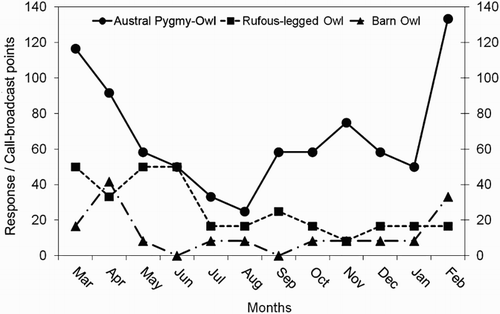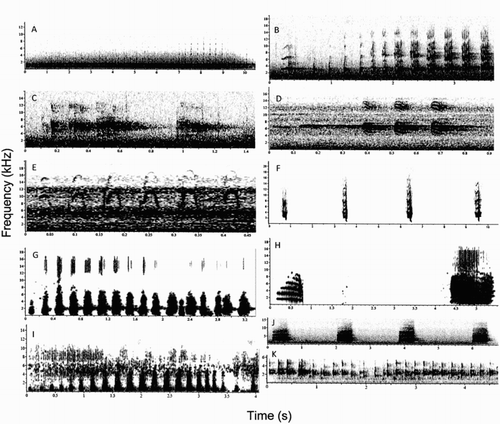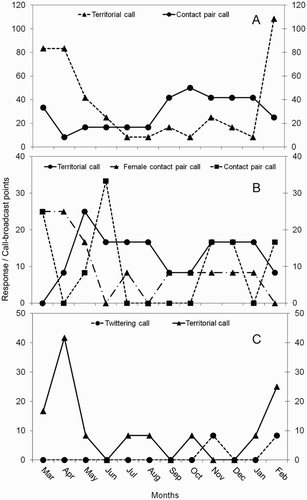Figures & data
Table 1. Model selection statistics based on Akaike's Information Criterion (AIC) for estimating probability of occurrence (Ψ) and detection (ρ) of three owl species in temperate rainforests of southern Chile. Site-specific covariates: linear distance of broadcasts points to urban population (dis), and vegetation or canopy cover (cov), as a proportion (%) of the sky covered by canopy in each broadcast points. Sampling-occasion covariates or time-varying covariates: median temperature (T°) and presence of nest of the target species near (< 100 m) the broadcast point (nest). Only the top five model sets are shown.
Figure 1. Annual detection patterns of the three owl species recorded in Cerro Ñielol Natural Monument, southern Chile (March 2009–February 2010).

Figure 2. Spectrograms showing the vocalisations recorded from the three owl species. A, Austral pygmy owl contact pair call; B, austral pygmy owl territorial call; C, austral pygmy owl tick tiririck call; D, austral pygmy owl nestling call or trigigick call; E, austral pygmy owl courtship call; F, austral pygmy owl diuh diuh call; G, rufous-legged owl territorial call; H, rufous-legged owl female contact pair call; I, rufous-legged owl contact pair call; J, barn owl territorial call; K, barn owl twittering call.

Figure 3. Annual variation in vocalisations in the three owl species in Cerro Ñielol Natural Monument, southern Chile (March 2009–February 2010). A, Austral pygmy owl; B, rufous-legged owl; C, barn owl.

